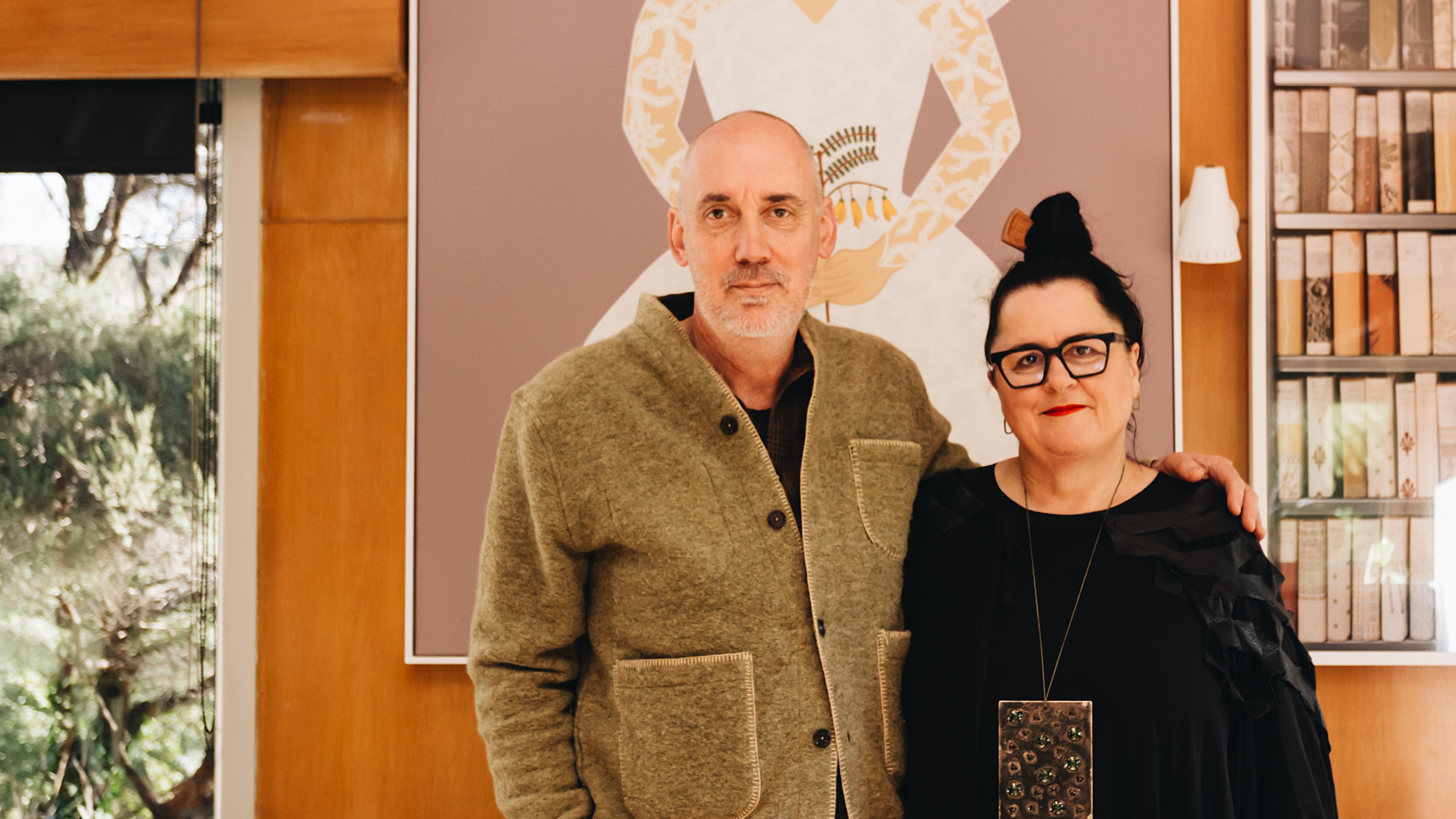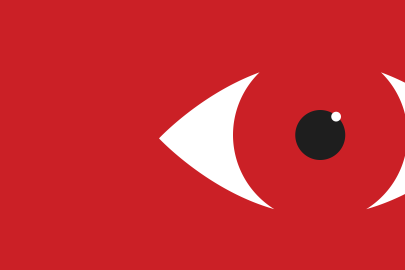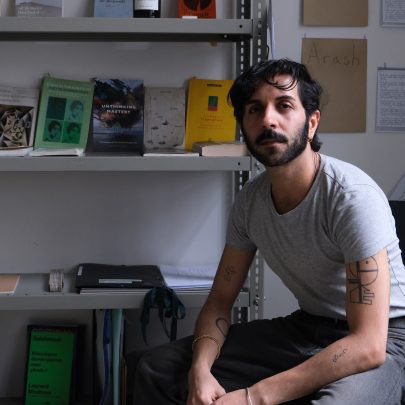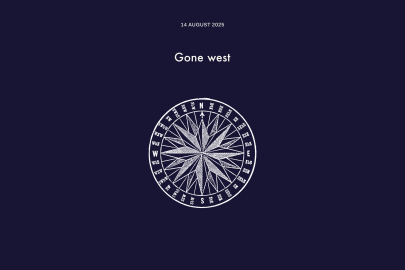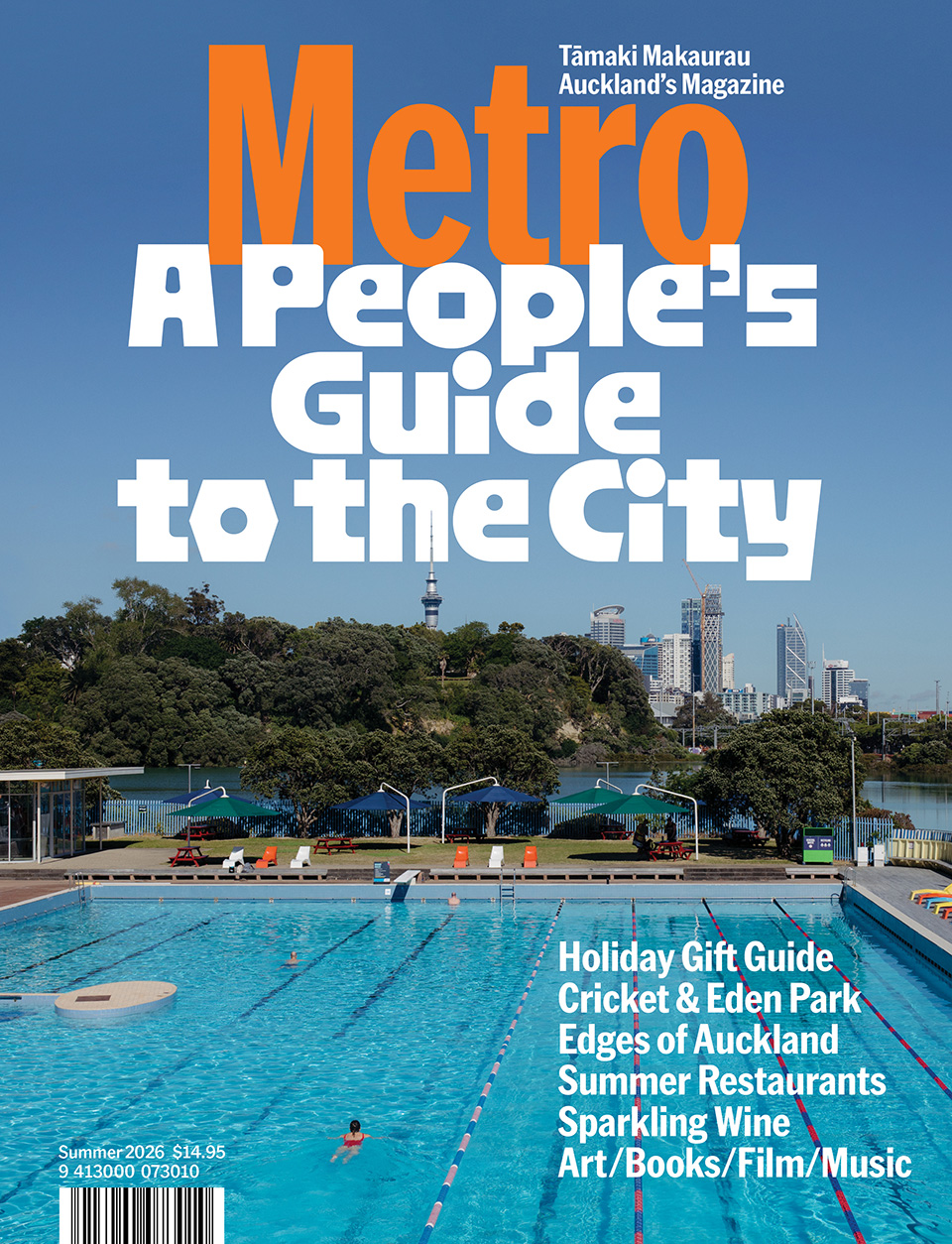Jul 8, 2025 Arts
Just before Christmas, the artist Ann Shelton was walking through Brunswick on a short trip to Melbourne when her heart stopped. For a week she was in a coma. The first couple who saw her collapse were visibly upset, but carried on. A pair of nearby physiotherapists rushed to her aid and started CPR. The physiotherapists were joined by two lovely young lesbians. It takes a lot of people to do CPR — the process is physical, almost violent. You have to pump the person’s chest to the rhythm of ‘Staying Alive’. Next, a man showed up who had got a ping on his GoodSAM app that someone in the area was having a cardiac arrest.
“Then they whisked me off to Melbourne Hospital and I was only three minutes away. I pieced together what happened a week later. So, I was incredibly lucky. Out of 100 people, 50 women and 50 men, only three women survive an attack like this,” Ann says.
“And you are one of them,” I reply.
We’re sitting across a table at Floriditas on a good day in Wellington, drinking sparkling water.
“You know, Ann, if I start this article by saying ‘Ann Shelton was walking through Brunswick on a short trip to Melbourne when her heart stopped’, everyone is going to read it,” I levelled with her. Memoir is my oeuvre.
Ann laughs. “I knew you were going to try and talk me into this…”
She has brown eyes with a strong shot of mischief, and wears thick, angular, black-rimmed designer glasses (I’m guessing Karen Walker). She’s always had impeccable style — hands full of golden one-off rings — but she’s full of earthy pragmatism, too. Maybe her good bullshit detector comes from being raised in working-class Timaru. Her mum owned a second-hand shop; her dad was a car dealer.
“So did you…” I begin to ask.
“I don’t remember anything,” she says. “I didn’t see anything. I never went to the other side. I don’t believe in the other side, do you? No, it’s all worms. It’s all worms. And we are not going to see the fucking worms.”
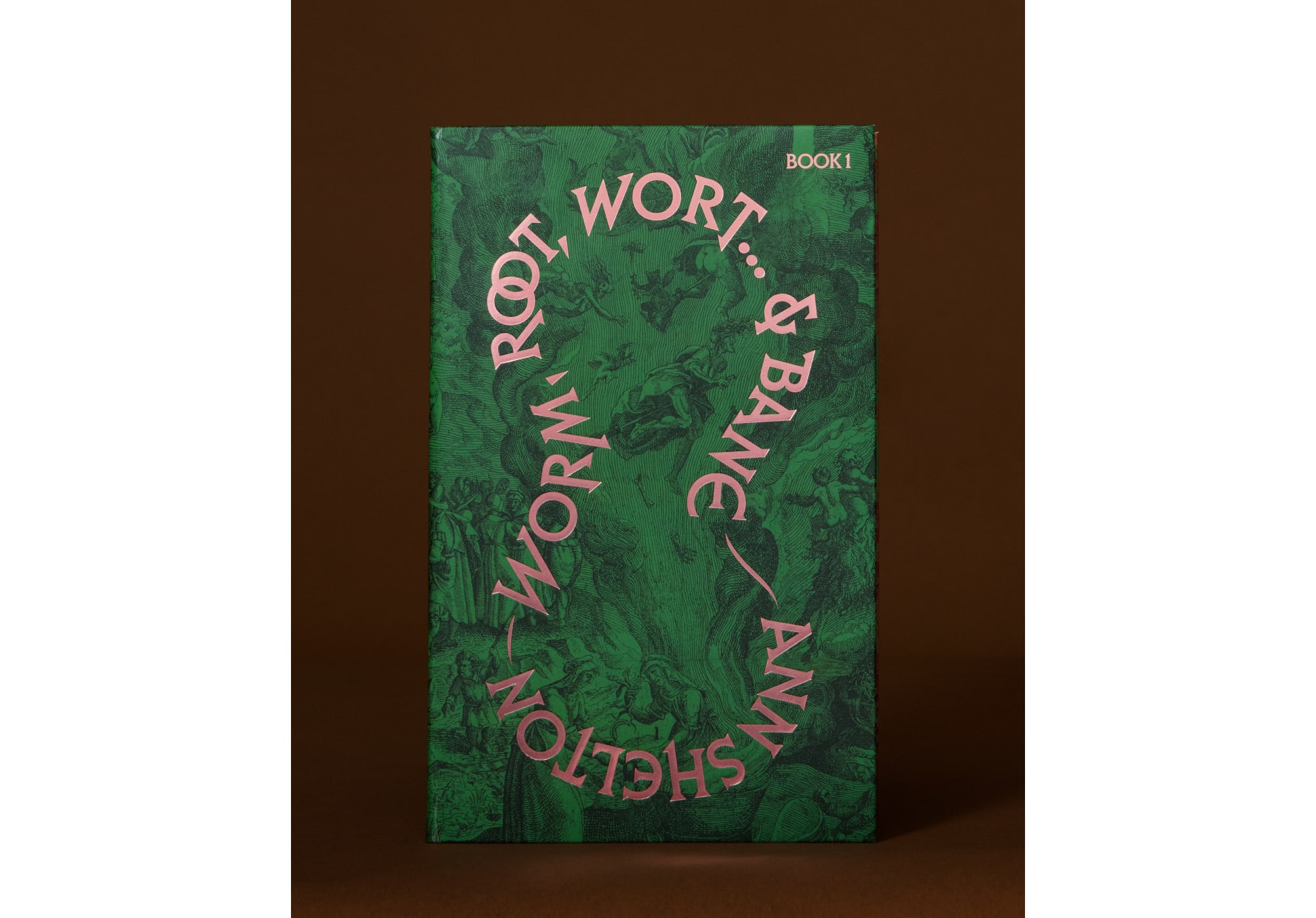 Ann Shelton, worm, root, wort… & bane, 2024
Ann Shelton, worm, root, wort… & bane, 2024
Sage words from the photographer who last year published worm, root, wort… & bane, a lavish artist’s book showcasing her ongoing photographic series i am an old phenomenon (2022– ), which features close-up portraits of witchy mysterious plants. Shelton’s partner, Duncan Munro, designed this spellbinding little green book and rightly won an award for it. Thumbing through the pages is like discovering a secret garden — What the heck is a wortcunner? One who knows the medicinal and herbal properties of plants. Taken in the right tinctures and tonics, plants can either knock you up, heal you or kill you. Shelton is interested in the lexicon of the witch and the ingredients of witchcraft, of pre-industrial knowledge suppressed and contained. Her first floral series, jane says (2015– ), was of arrangements of spiky nonchalant herbs and flowers — peony, rue, sage and pennyroyal — captured against lurid orange and purple backgrounds. These plants were used as early birth control, during labour and for abortions, and exude a prickly ‘don’t fuck with me’ vibe.
Last year Ann and Duncan bought a modernist house in Titirangi designed by the pioneering émigré architect Tibor Donnor. Modernist homes are another touchstone for Shelton. “I’d never move into a new house,” she says. This is the second mid-century home Ann and Duncan have lived in and restored. “It’s really got a handmade feel to it. There’s an amazing fireplace, beautiful old woodwork and terracotta tiles.” But — perhaps most importantly — the house also has a large garden she can grow plants in.
“It’s not like you can just go to a shop and get a skullcap,” she tells me.
As if I’d know. The plants in my small home are watered by my partner. I look right through them.
“What are you growing at the moment?” I ask.
“Marshmallows,” Ann explains. “From the mallow family. The roots have some kind of gelatinous substance in them that marshmallows were originally made from.”
But why am I telling you about marshmallows? What I really want to discuss is the big stuff: how Ann has grown and maintained her career. (She is represented by gallerists Two Rooms in Auckland and now also Jhana Millers in Wellington.) I’m so glad she’s still alive and kicking. Thriving.
“I’ve always been interested in margins, the subcultures and the figures who occupy them,” she says.
Ann and I go way back, to the early 90s, when Verona was the obligatory watering hole for a bunch of artists, musicians and spunky junkies trying to live fast and die young on Karangahape Rd. Only some of us succeeded.
 Ann Shelton, Abigail’s party: Golden girl (twin set, view #1), 1999
Ann Shelton, Abigail’s party: Golden girl (twin set, view #1), 1999
Ann was always a step or two ahead of me, slightly older, much wiser. She had found and rented the penthouse apartment at the top of the building next to Samoa House on K Rd. The apartment was originally built for some rich dude’s mistress and was decked out in full retro chic like a Stanley Kubrick film set. Her flatmates included fellow artist Lisa Reihana. I once went to a party there. Standing on the roof terrace looking out over the city lights, I thought it was the coolest place in the world. (In 1999, Shelton photographed the interiors for her series Abigail’s Party.)
“It had 360-degree views of Auckland,” Ann says. “I remember thinking at the time, ‘I’ll never live anywhere this amazing again’.”
She was wrong.
In 1997 Shelton published her first photobook, Redeye. It was a career-defining moment for her, and for the subjects caught red-eyed in the glare of the camera’s flash. The shit that went on in that photobook, and the shit that was said about it.
The cover image is a close-up of the young art student David Townsend, during a body art performance, blood pooling on his right eyelid, a brilliant Verona shade of red. He wears long fake black lashes and looks like he is winking.
Shelton cut her teeth on the impossible ethics of photography. Who has the right to photograph whom? She had first trained as a press photographer, working in Wellington, but after she read Susan Sontag’s On Photography, she changed the way she made images, and began to capture her own peer group, not someone else’s.
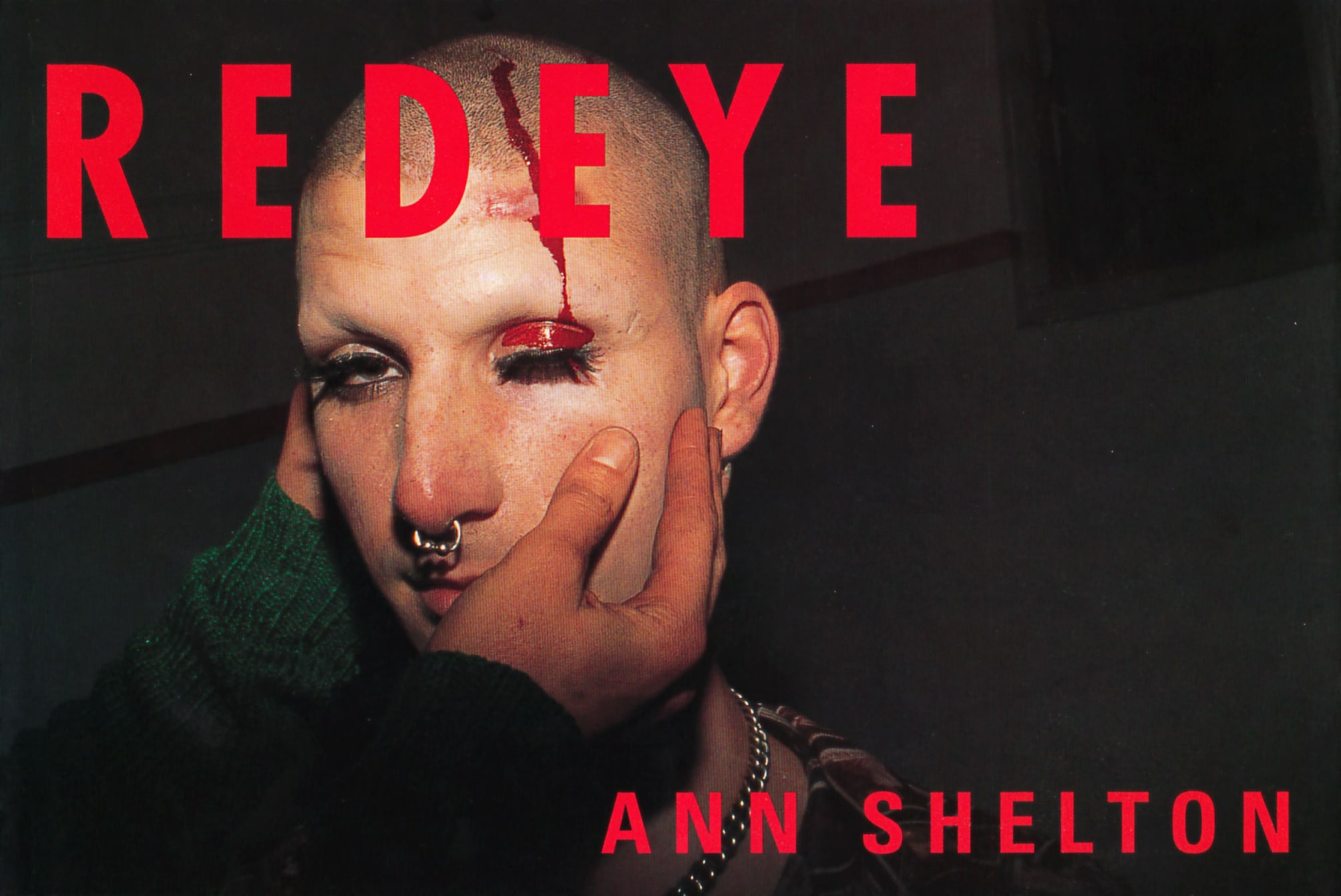 Ann Shelton, Redeye, 1997
Ann Shelton, Redeye, 1997
Redeye is a collection of candid snaps of people and places Ann knew and worked with closely, including influential figures in the contemporary art scene — Daniel Malone, Ava Seymour, Fiona Amundsen, and the critic, writer and gallerist Giovanni Intra. She even took multiple photographs of Fiat Lux, the artist-run space on Hobson St I once ran with David. Our living room sported a small taxidermied deer and a feature wall of op-shop-bought paintings of busty brunettes — JH Lynch’s kitsch classic of Tina in that tree, wearing her pink sarong. Ann got it all.
Redeye preceded social media and selfies. At the time it was lauded, but also stereotyped (“her friends are all prostitutes”) and criticised for narcissism. But I think Giovanni Intra summed up its brilliance best: “The idea of celebrity meets the idea of the nobody.”
Yes. Redeye was prescient and powerful. Shelton’s career went on to shift from figuration to landscapes, but the themes have remained constant: “the spectre of femininity, the idea of what female bodies ‘should’ embody and how women are not valued in this society, misogyny, violence against women, the fluidity of gender”.
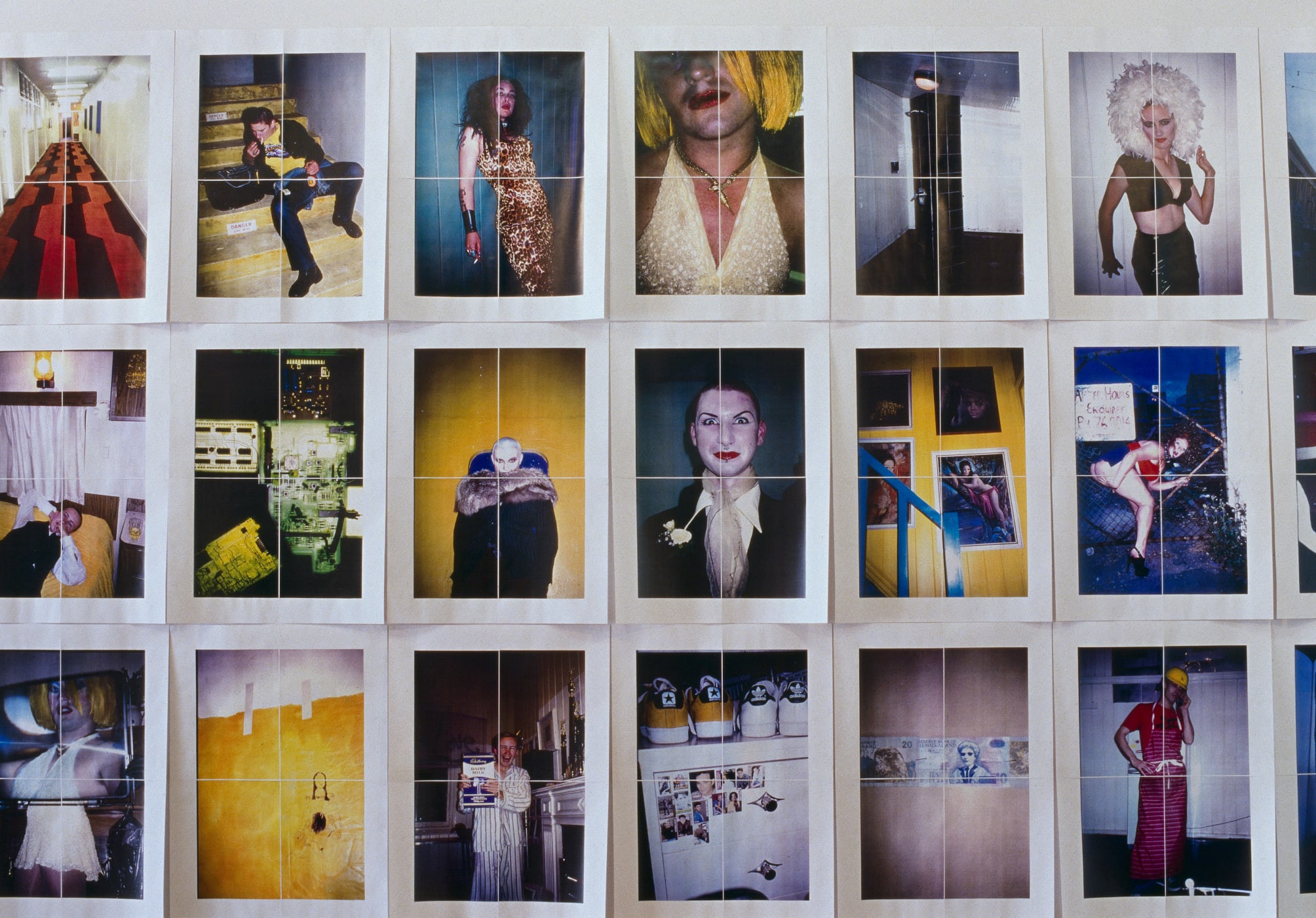 Ann Shelton, Redeye, The Manawatu Art Gallery, 1997
Ann Shelton, Redeye, The Manawatu Art Gallery, 1997
She loves this quote by trans singer Anohni: “All of diversity is an opportunity for a more paradisical relationship to the world around us. Diversity is the nature of paradise. Monoculture is the nature of prison.”
The quote unlocks a new level for me in Shelton’s photographs.
Currently she has two works in Photosynthesisers: Women and the Lens, a group exhibition that has just opened at Te Uru in Titirangi. Curated by James Gatt, the show surveys the practices of 41 women artists and collectives — including fa‘afafine, queer and trans women — from Aotearoa and Australia.
“You must have loved that title, Photosynthesisers?” I say, though ironically her works in the exhibition are not of plants.
“I’ve been thinking a lot about the relationship between plants and photography lately because both use light. And both also have this interesting relationship with dirt and darkness because photography traditionally emerged from the darkroom.”
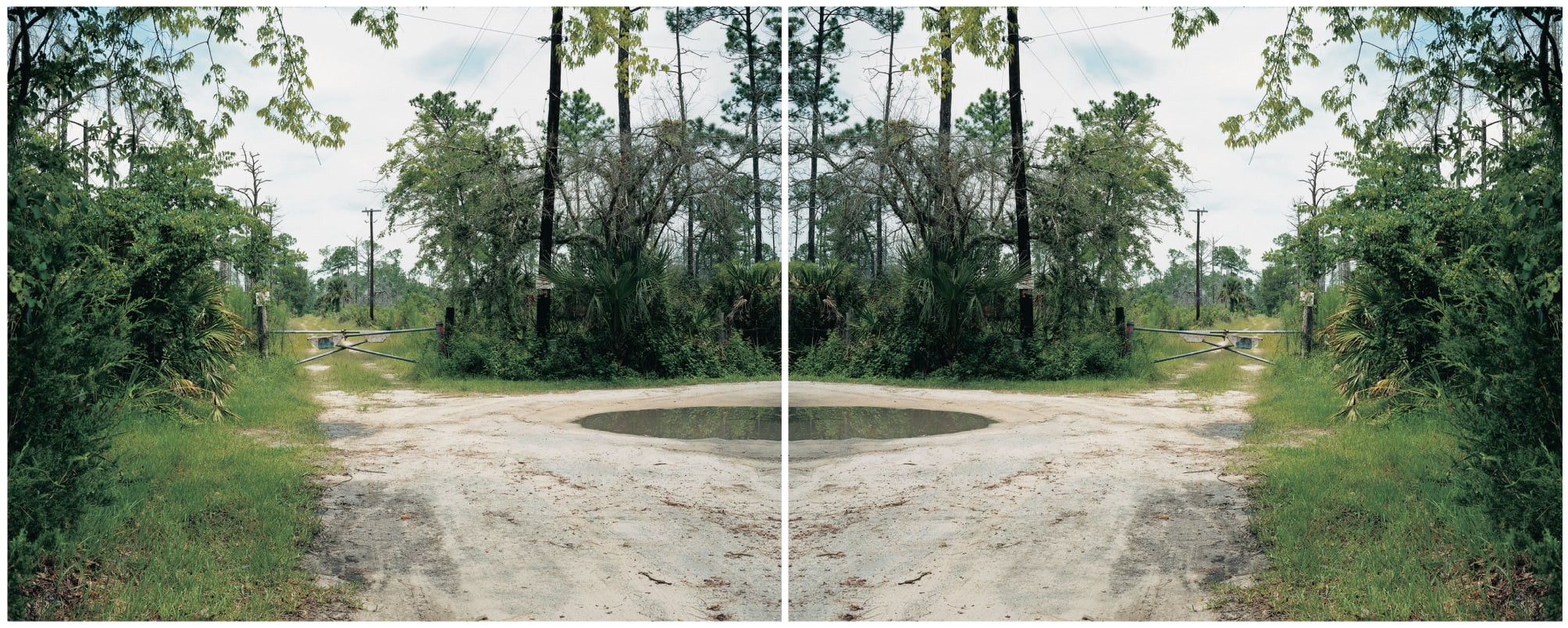 Ann Shelton, Trespass (after Monster), Daytona Beach, Florida, USA, 2001
Ann Shelton, Trespass (after Monster), Daytona Beach, Florida, USA, 2001
One of Shelton’s works in the exhibition is the mirrored dyad Trespass (After Monster), Daytona Beach, Florida, USA (2001), which depicts the lonely site where Aileen Wuornos took the body of her first ‘victim’, a man she alleged had raped her anally with lighter fluid as lubricant.
Of Trespass, the curator James Gatt tells me, “There is something powerful about Ann choosing to visit a site that holds the memory of another woman whose fate was decided by a judicial system that carries inherent prejudices against, or at least unfair assumptions about, women — especially prostitutes. When I look at this work, I strongly sense the energy of the site and feel deeply for Wuornos.”
Yes. The banality and the emptiness of the dyad photograph captures a dead end — a place where the heart literally stopped. Shelton took this photograph on a trip to the United States in 2001; a year later, Wuornos was given a lethal injection. Trespass has the same forensic precision and force that characterises all of Shelton’s photography. She’s always been focused, canny, able to get the shot. But I notice too in this scene the infringing trees, the sense of nature encroaching, the plants closing in and taking over. And beneath the plants, the worms, in paradise.

